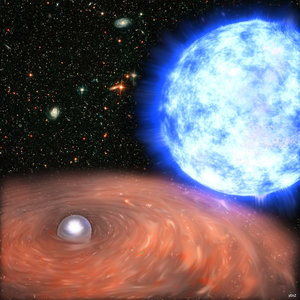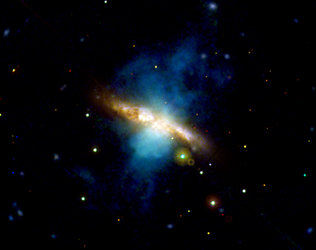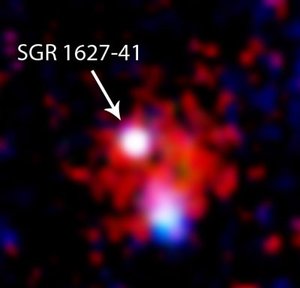Notes for Editors
“The 2.35 years itch of Cyg OB2 #9 I. Optical and X-ray monitoring” by Y. Nazé et al., is accepted for publication in Astronomy & Astrophysics.
Animation caption:
Colliding winds at Cyg OB 2 #9
Evidence for colliding stellar winds in the Cyg OB2 #9 binary system was only found as the two stars neared the closest point on their 2.4-year orbit around each other. As the stars approach each other the fierce stellar winds slammed together at speeds of several million kilometres per hour, generating hot plasma at a million degrees which then shone brightly in X-rays. The emission falls away as the two stars move away from each other.
The animation begins by tracing the orbits of the two stars, before presenting X-ray data from ESA’s XMM-Newton and NASA’s Swift space telescopes during observing opportunities of Cyg OB2 #9 in 2011. The corresponding positions of the stars along their orbits are illustrated in the animation inset.
Credits: NASA Goddard Space Flight Center
Colliding winds at WR 22
This computer simulation shows the gas density around a colliding wind binary named WR 22. The star locations are marked by yellow dots, and decreasing gas density is indicated by the sequence of red, white and blue colours. In this simulation, a 26 solar mass O-type star orbits the hotter and more massive 72 solar mass Wolf-Rayet star WR 22. During closest approach, the more massive star's stellar wind is so intense that the collision region is forced back onto the O star. Such a collapse of the wind region does not occur with Cygnus OB2 #9, which makes it a well-behaved and important example of wind-wind interactions.
Credits: University of Liège/Australian National University/E. R. Parkin and E. Gosset
For further information, please contact:
Markus Bauer
ESA Science and Robotic Exploration Communication Officer
Tel: +31 71 565 6799
Mob: +31 61 594 3 954
Email: markus.bauer@esa.int
Yael Nazé
Université de Liège, Belgium
Email: naze@astro.ulg.ac.be
Norbert Schartel
XMM-Newton Project Scientist
Tel: +34 91 8131 184
Email: Norbert.Schartel@sciops.esa.int















 Germany
Germany
 Austria
Austria
 Belgium
Belgium
 Denmark
Denmark
 Spain
Spain
 Estonia
Estonia
 Finland
Finland
 France
France
 Greece
Greece
 Hungary
Hungary
 Ireland
Ireland
 Italy
Italy
 Luxembourg
Luxembourg
 Norway
Norway
 The Netherlands
The Netherlands
 Poland
Poland
 Portugal
Portugal
 Czechia
Czechia
 Romania
Romania
 United Kingdom
United Kingdom
 Slovenia
Slovenia
 Sweden
Sweden
 Switzerland
Switzerland






































